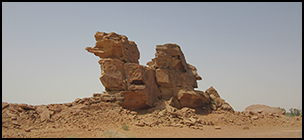Article contents
The art of rock relief in ancient Arabia: new evidence from the Jawf Province
Published online by Cambridge University Press: 09 February 2018
Abstract

The relative scarcity of ancient Arabian rock reliefs has been a significant barrier to understanding the development, function and socio-cultural context of such art. The recently discovered ‘Camel Site’ in northern Arabia depicts, for the first time, life-sized camelids and equids carved in low- and high-relief. Analysis and stylistic comparison of the art suggest a distinct Arabian tradition, which perhaps drew upon Nabataean and Parthian influences. That this isolated and seemingly uninhabitable site attracted highly skilled rock-carvers is striking testimony to its importance for surrounding populations. Perhaps serving as a boundary marker or a place of veneration, the Camel Site offers important new evidence for the evolution of Arabian rock art.
- Type
- Research
- Information
- Copyright
- Copyright © Antiquity Publications Ltd, 2018
References
- 5
- Cited by


